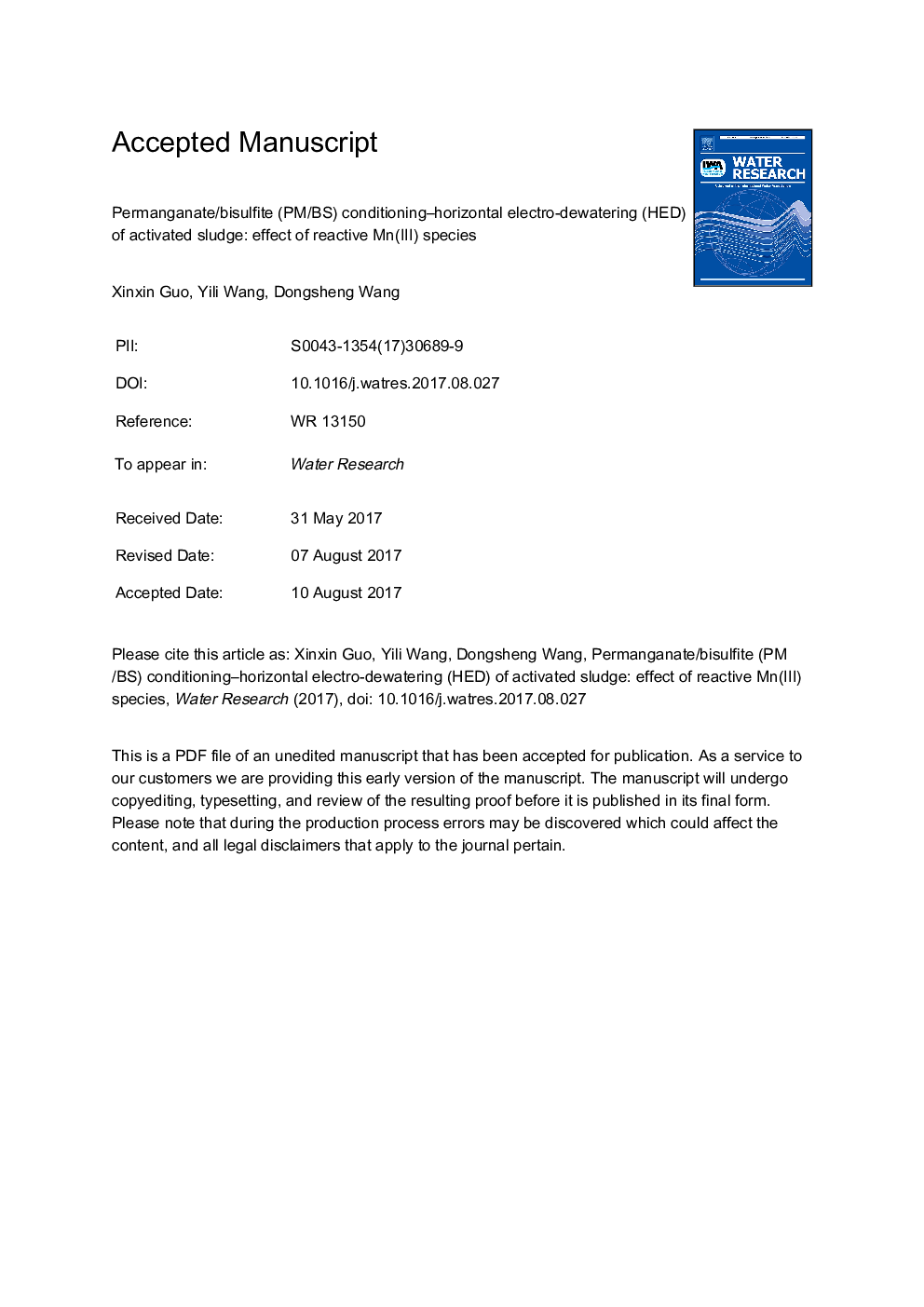| Article ID | Journal | Published Year | Pages | File Type |
|---|---|---|---|---|
| 5758755 | Water Research | 2017 | 50 Pages |
Abstract
A novel activated sludge (AS) conditioning method through permanganate/bisulfate (PM/BS) process was proposed. The method involved a new conditioner of reactive Mn(III) intermediate. Moreover, a Mn(III) conditioning-horizontal electro-dewatering (Mn(III) C-HED) process was established to improve AS dewatering performance. Underlying mechanisms were unraveled by investigating changes in physicochemical characteristics, scanning electron microscope (SEM) morphology, and transformation of water and organic matters. The optimum dewatering conditions for Mn(III) C-HED process with the final water content of 86.94% were determined as the combination of KMnO4 0.01Â mol/L AS and NaHSO3 0.05Â mol/L AS at 20Â V for 120Â min. Results showed that Mn(III) C-HED process effectively reduced free water and bound water with the corresponding removal ratios of 51.68% and 87.62% at the anode-side as well as 36.55% and 85.08% at the cathode-side, respectively. During the PM/BS process, the produced Mn(III), Mn2+, and MnO2 exerted chemical and physical effects on AS conditioning and dewatering. Mn(III) disintegrated extracellular polymeric substances (EPS) fractions and cells in AS, as well as induced partial bound water release. Additionally, flocculation effect induced by Mn2+ and MnO2 skeleton building also benefited AS dewatering. AS cells were further disrupted under the effect of a horizontal electric field. Accordingly, EPS within the AS matrix was solubilized, tightly bound (TB)-EPS or loosely bound (LB)-EPS was converted to their corresponding outer EPS fractions, and AS dewaterability improved. Additionally, changes in pH and temperature at HED stage damaged the AS cells and changed the floc properties, thereby leading to easy separation of liquid and AS particles.
Related Topics
Physical Sciences and Engineering
Earth and Planetary Sciences
Earth-Surface Processes
Authors
Xinxin Guo, Yili Wang, Dongsheng Wang,
